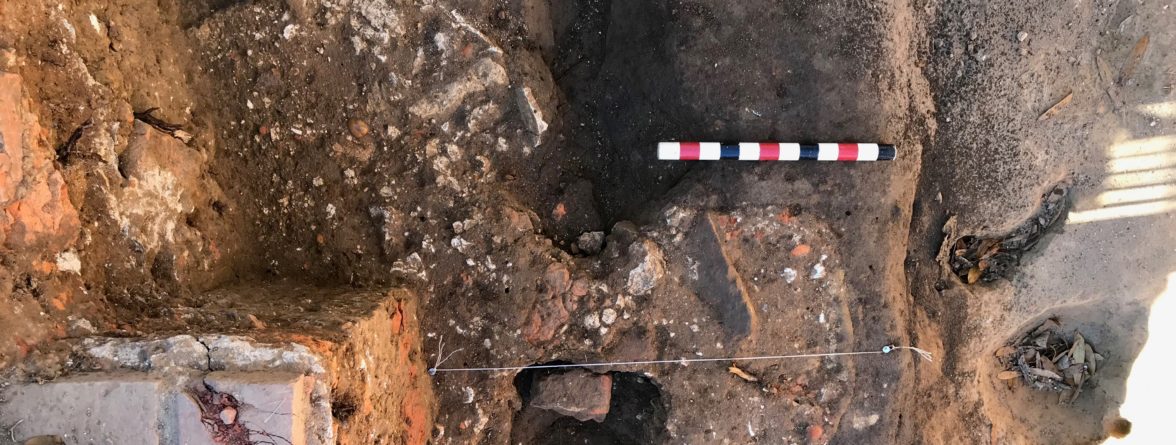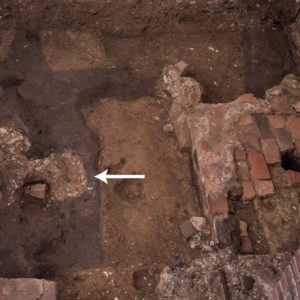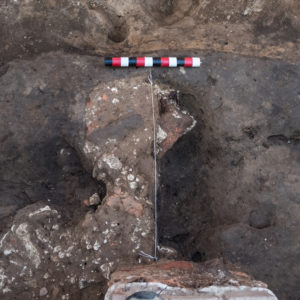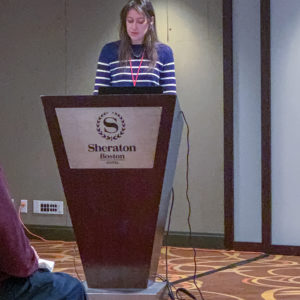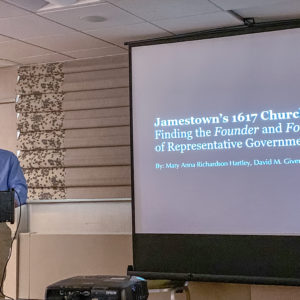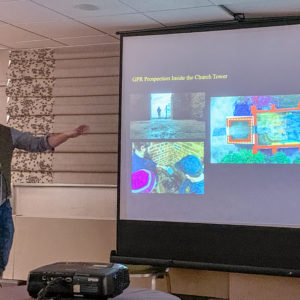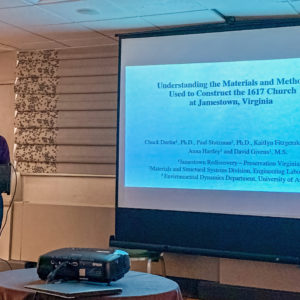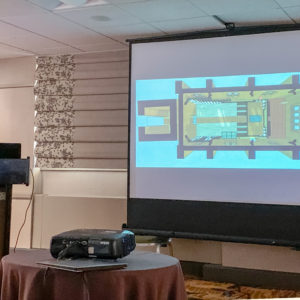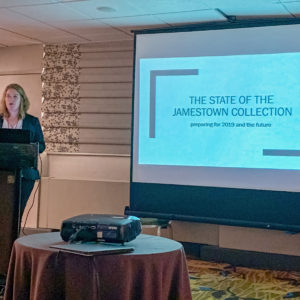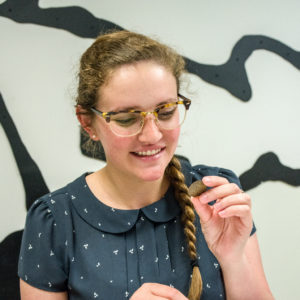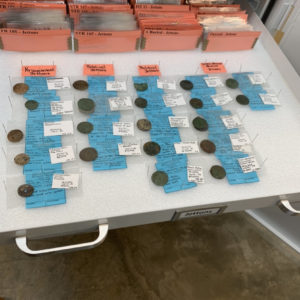With the cold weather finally upon us, archaeological work at Jamestown has slowed considerably. This has been a welcome reprieve after our busy last few months, when the archaeology team was working nearly non-stop. Right now, the crew is finishing up excavations around the 1906 Memorial Church. We have been excavating around the original entrance to the 17th-century brick church, only a few feet away from the modern-day entrance on the south side of the Memorial Church. Recently, we removed the upper few inches of many of the features present around the entryway, in order to better determine their boundaries and potentially when they were created.
One of these features was a large pit containing many fragments of plaster and mortar—possibly from the 1617 church. The team has been analyzing the different mortars recovered from the recent excavations inside the Memorial Church. The different types of mortars and plasters found during that project might elucidate the different construction or repair periods for the 1617 church and the brick church that replaced it in 1639. Hopefully, the
plaster and mortar recently excavated from our pit feature will match some of
the material found inside the Memorial Church.
The archaeology team is not just working in the field. At the beginning of January, senior members of the archaeology team headed up to Boston for the 2020 Society for Historical Archaeology conference. The conference—and others like it—are great places to make professional connections and hear about other archaeological finds and research from across North America. The Jamestown Rediscovery staff gave presentations about our recent excavations inside the Memorial Church, and caught up on the latest archaeological research from around the continent. Peter Leach from GSSI joined the team to discuss how one of the burials in the Memorial Church was imaged using ground-penetrating radar.
While the fieldwork has been slowing down here at Jamestown, our lab staff has been hard at work on a wide variety of projects. During the last couple of years, the lab staff has worked to create a complete reference collection of the best examples of artifacts found during the Jamestown excavations. To help accomplish this task, the team hosted a few interns to accelerate to process.
Among the interns hired was College of William & Mary graduate student Bronwynn Terrell, who is working towards her Masters of Education. Prior her internship at Jamestown, Terrell worked in the Oceania Lab with Dr. Jennifer Kahn and Virginia’s Archaeology Lab with Dr. Martin Gallivan. Her main focus at Jamestown was inventorying all of the coins, jettons, tokens and coin weights and then selecting the best examples of each type. Terrell created images of the objects by scanning each chosen example and plans to one day use the material to create posters and small booklets that showcase this piece of our collection. It is hoped that her work will facilitate further research into how these coins, jettons, tokens, and coin weights were used in the colony.
Check out the Dig Update video for more about Terrell’s work with the jettons in the collection!
related images
- Frost covers the James Fort model at Historic Jamestowne.
- The plaster-filled feature near the original entrance to the 1639 church
- The plaster-filled feature after partial excavation
- Les Jennings analyzing the different types of mortar found during the Memorial Church excavations
- Alexis Ohman presenting on her doctoral research
- Dave Givens explaining the Memorial Church excavation project
- Sean Romo presenting on behalf of Mary Anna Hartley, and explaining the archaeological remains of the 1617 church
- Peter Leach from GSSI discussing how a burial in the Memorial Church was imaged using ground-penetrating radar
- Chuck Durfor presenting on the analysis of mortar from the 1617 church
- Dan Gamble discussing the conservation of the Knight’s Tomb grave marker
- Michael Lavin discussing the creation of the 1617 church exhibit within the Memorial Church
- Lisa Fischer explaining how the 1617 church was digitally reconstructed
- Leah Stricker presenting on the state of the artifact collection at Jamestown
- Bronwynn Terrell closely examining a jetton found at Jamestown
- The results of Bronwynn’s hard work: many sorted jettons


